Photo Gallery
Album of Lieutenant Edward Melville Forbes-Taylor
Page One
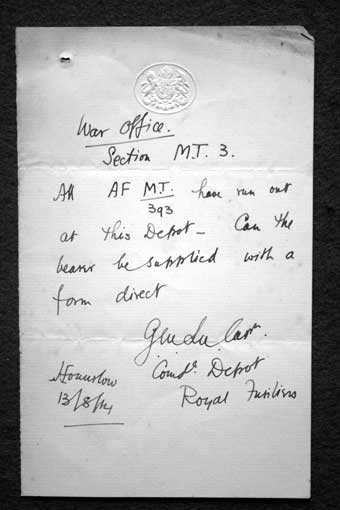
Memo, War Office, Section MT3. Concerning All Army Form MT393 having
been run out at this Depot (Hounslow), signed by the Commandant, Depot,
Royal Fusiliers, and dated 13 Aug 1914.
Accession Number: KO2928/05-001

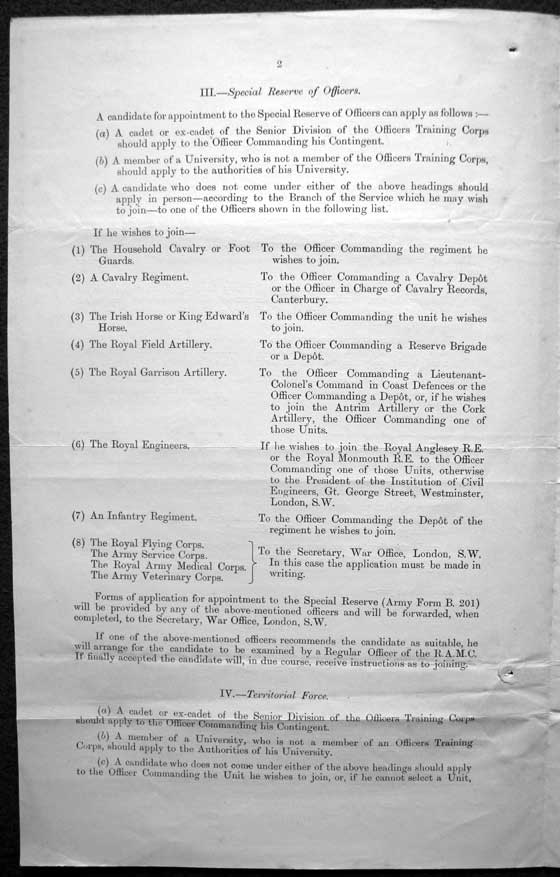
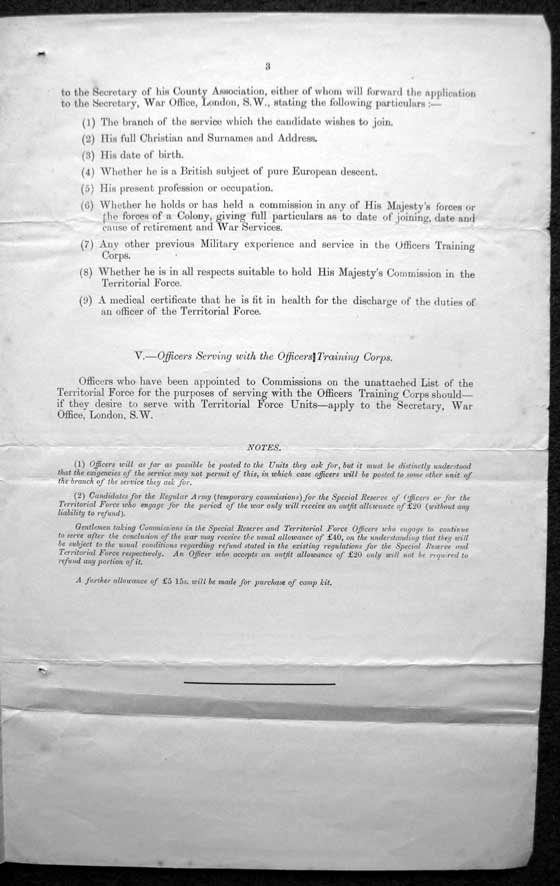
Form MT391 Commissions in the Army.
Accession Number: KO2928/05-002
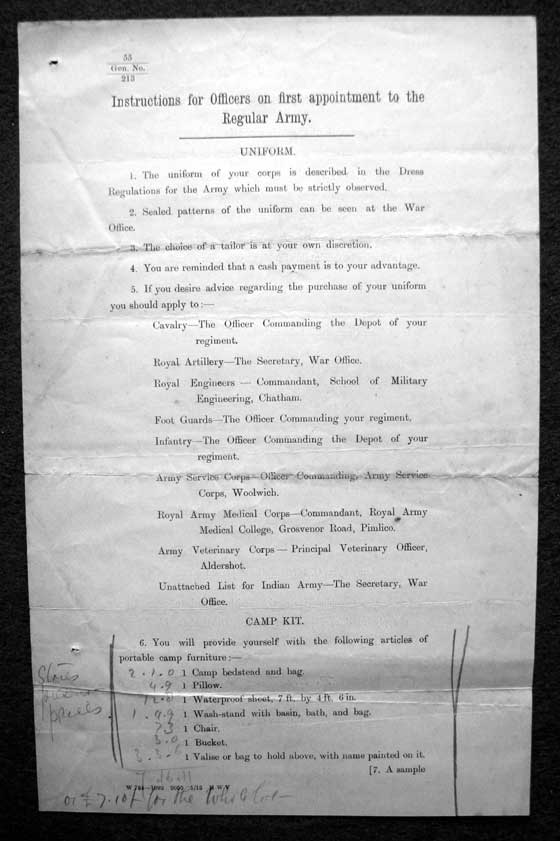
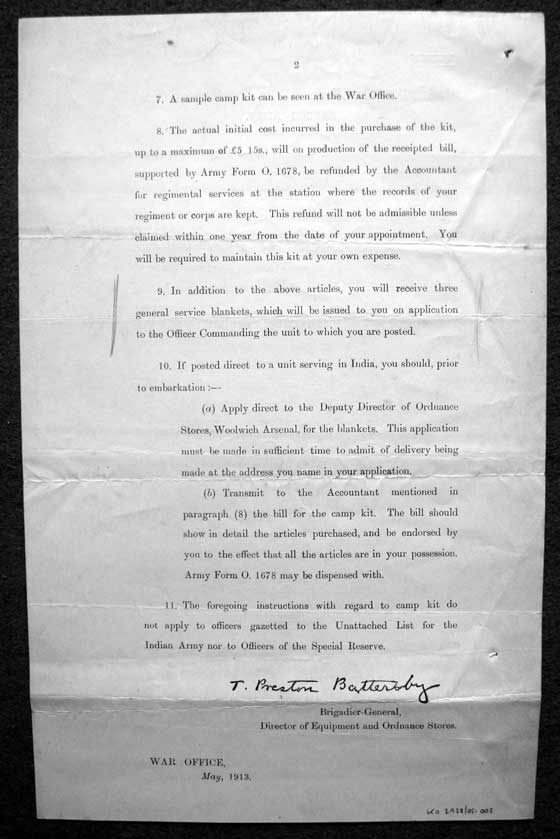
Form 55 Gen. No.313 Instructions for Officers on first appointment to
the Regular Army. covering Uniform, Camp Kit. War office, May 1913.
Accession Number: KO2928/05-003
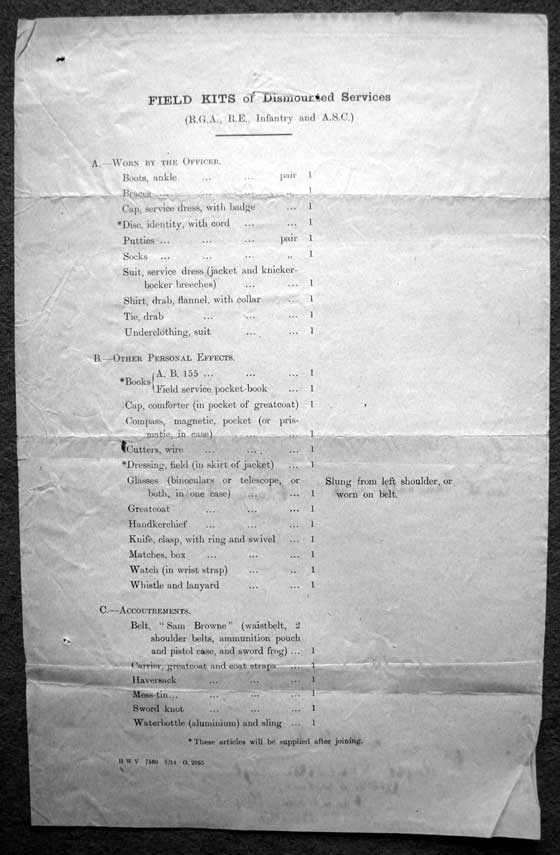
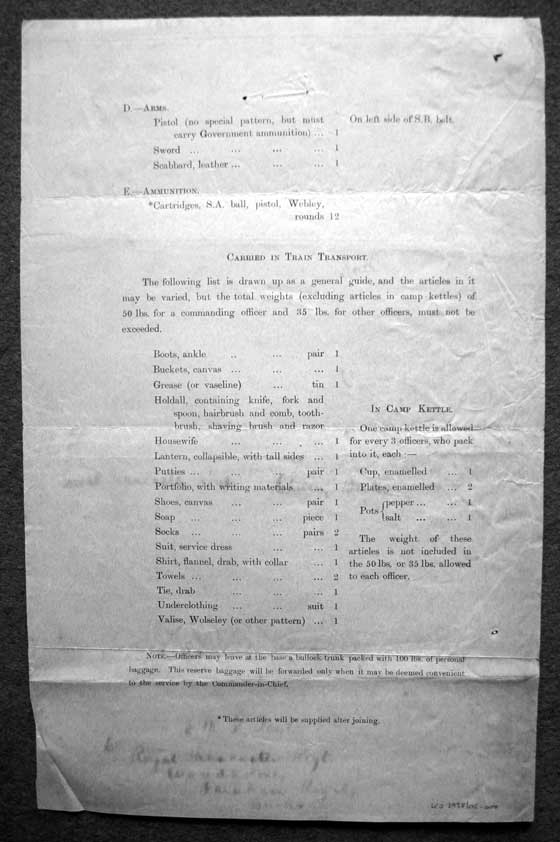
Details of Field Kits of Dismounted Services (Royal Garrison Artillery,
Royal Engineers, Infantry and Army Service Corps)
Accession Number: KO2928/05-004
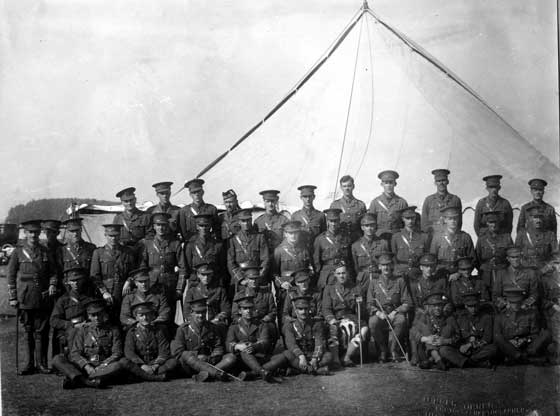
Group of officers, different regiments. Possibly University Officers
Training Corps at Churn Camp, Oxford, Aug 1914.
Photographed by Turner of Oxford.
Accession Number: KO2928/05-005
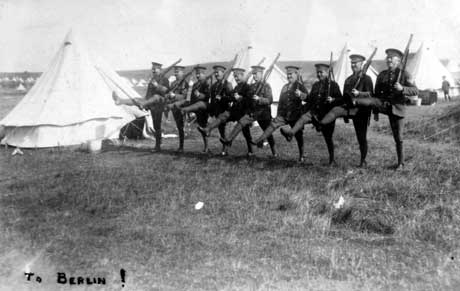
‘To Berlin!’ Churn Camp, Oxford, Aug 1914.
Accession Number: KO2928/05-006

Sorting tents. possibly Churn Camp, Oxford, Aug 1914.
Accession Number: KO2928/05-007
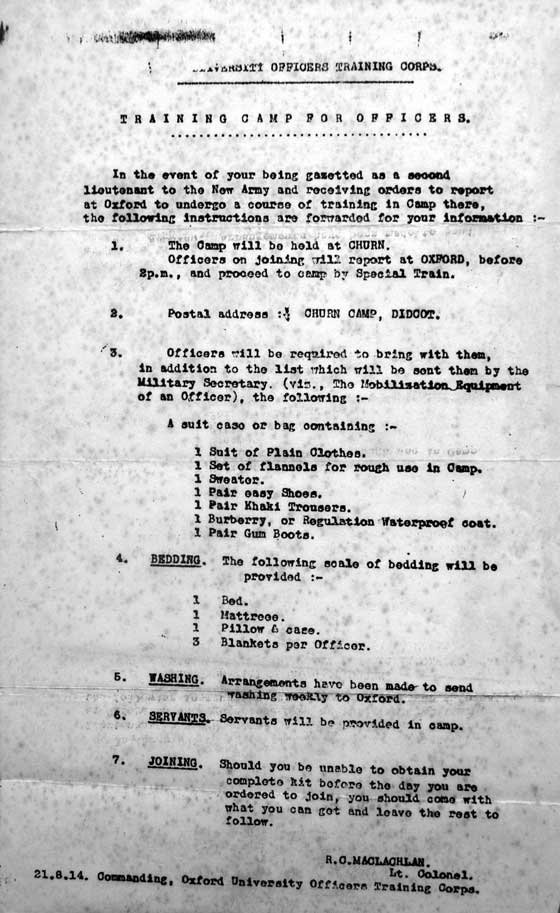
University Officer Training Corps, Training Camp for Officers. Details
of camp for officers in the new army to be held at Churn Camp, Didcot,
Oxford. Dated 21 Aug 1914 and signed by Lieutenant Colonel R G
Maclachlan, Commanding, Oxford University Officers Training Corps.
Accession Number: KO2928/05-008

MT Form 394 Commissions in Army
Accession Number: KO2928/05-009
‘Our New Army’ ‘Kitchener’s Young Officers. A Practical Training’ Dated
13 Sep 1914.
Accession Number: KO2928/05-010
Extract from the The London Gazette 28 Aug 1914
Accession Number: KO2928/05-011
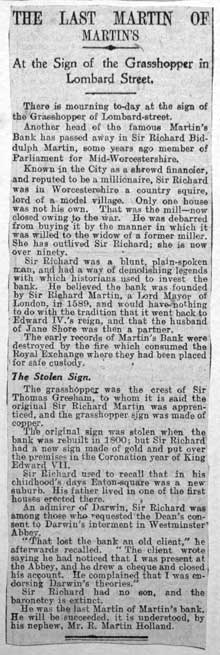
The Last Martin of Martins, At the Sign of the Grasshopper in Lombard
Street. 24 Aug 1916.
Accession Number: KO2928/05-012
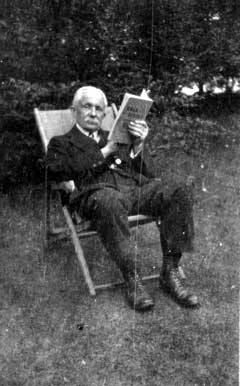
Man sat in deck chair reading book.
Accession Number: KO2928/05-013
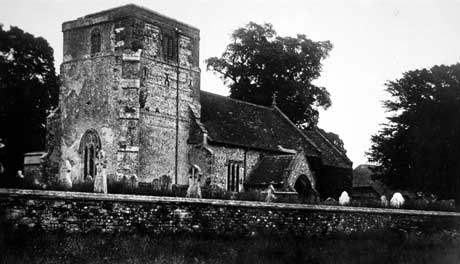
North Tidworth Church, Sep 1914-1915.
Accession Number: KO2928/05-014
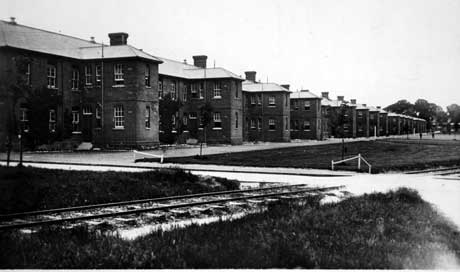
Lucknow and Mooltan Barracks, Tidworth, Sep 1914-1915
Accession Number: KO2928/05-015
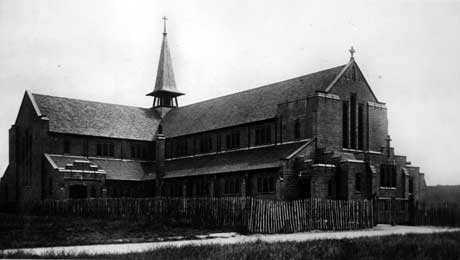
Garrison Church, Tidworth, Sep 1914-1915.
Accession Number: KO2928/05-016
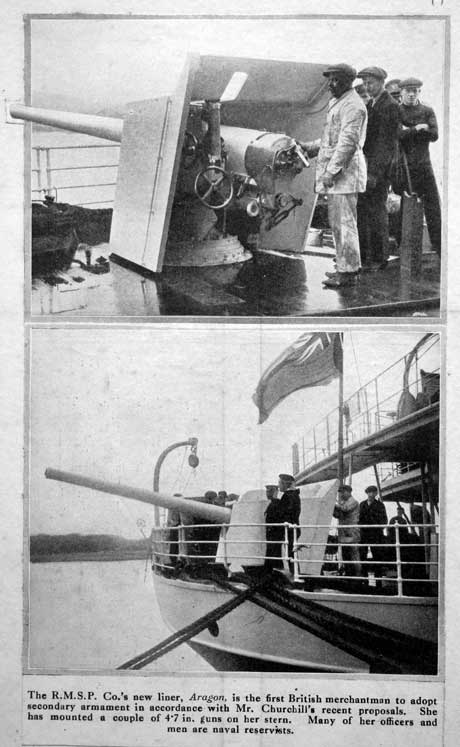
The RMSP Co’s new liner, Aragon, is the first British merchantman to
adopt secondary armament in accordance with Mr. Churchill’s recent
proposals.
Accession Number: KO2928/05-017
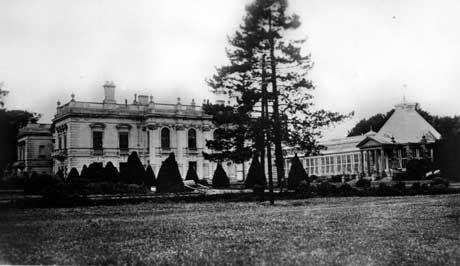
Tidworth House.
Accession Number: KO2928/05-018
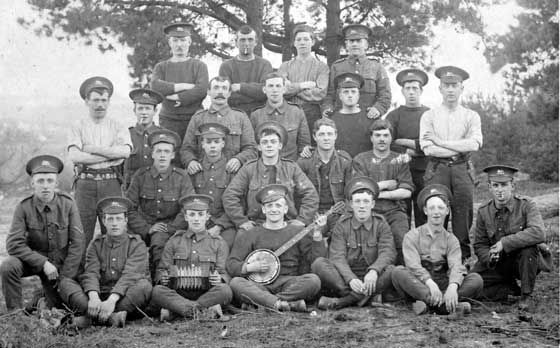
Number 11 Platoon.
Accession Number: KO2928/05-019
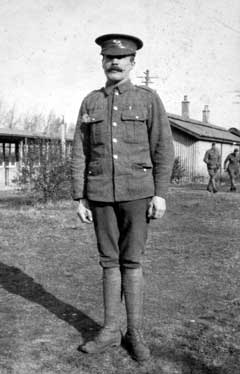
Private McMullen with Ashworth and Higgins in the rear.
Accession Number: KO2928/05-020
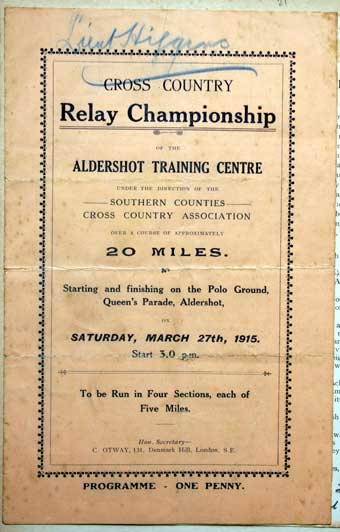
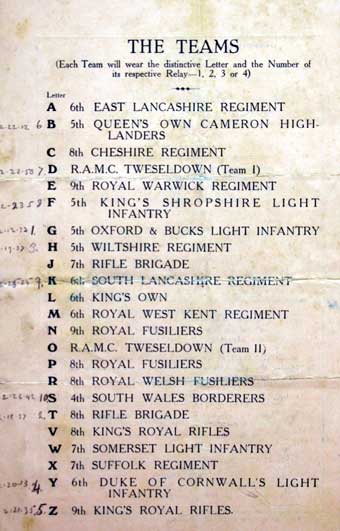
Programme for Cross County Relay Championship of the Aldershot Training
Centre, Saturday 27 Mar 1915.
Accession Number: KO2928/05-021

Details of Aldershot Relay Championship, Mar 1915.
Accession Number: KO2928/05-022
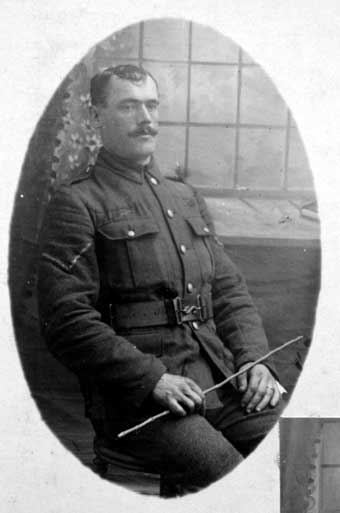
Lance corporal Stewart
Accession Number: KO2928/05-023
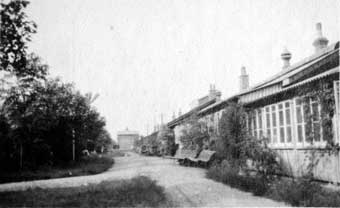
Alma Officers Mess, Blackdown.
Accession Number: KO2928/05-024
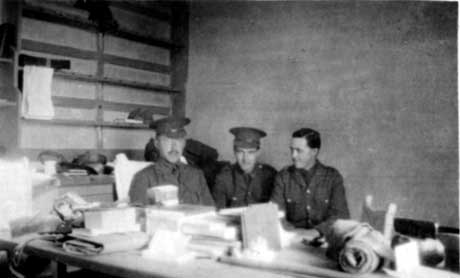
Interior view with Jurgens, Baines and Forbes-Taylor.
Accession Number: KO2928/05-025
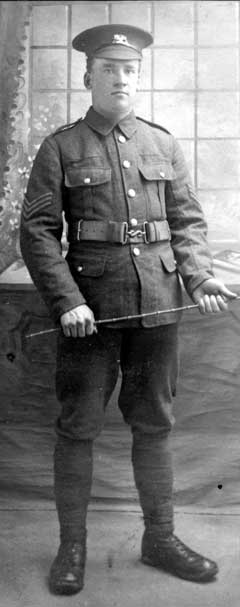
Unidentified Sergeant of the King’s Own Royal Lancaster Regiment.
Accession Number: KO2928/05-026
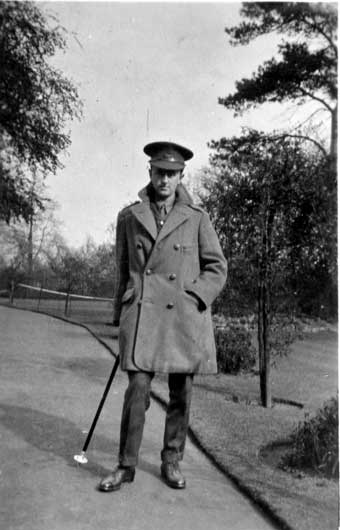
Unidentified officer of the King’s Own Royal Lancaster Regiment.
Accession Number: KO2928/05-027
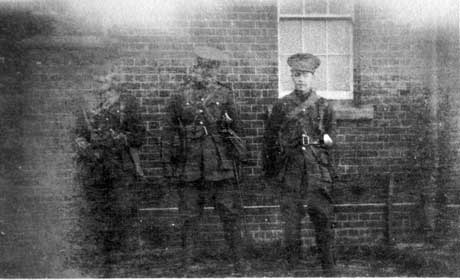
Thomas Nigel Baines, Fisher Arthur Haslett Freke-Evans and Edward
Melville Forbes-Taylor
Accession Number: KO2928/05-028
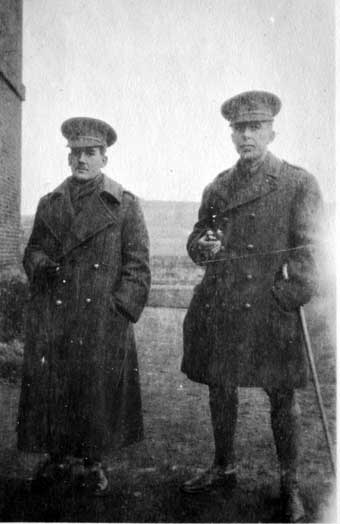
Jack Manlove and Sydney George Jurgens.
Accession Number: KO2928/05-029

Jack Manlove, Fisher Arthur Haslett Freke-Evans and Roland Ormsby
Taylor.
Accession Number: KO2928/05-030
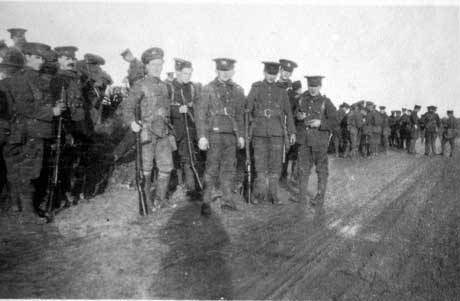
Number 3 Company, 6th Battalion, King’s Own Royal Lancaster Regiment
Accession Number: KO2928/05-031
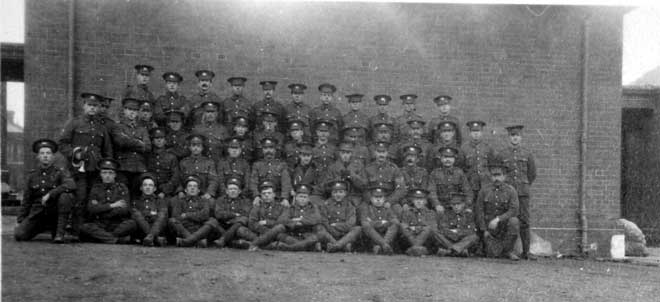
? Platoon, 6th Battalion, King’s Own Royal Lancaster Regiment.
Accession Number: KO2928/05-032
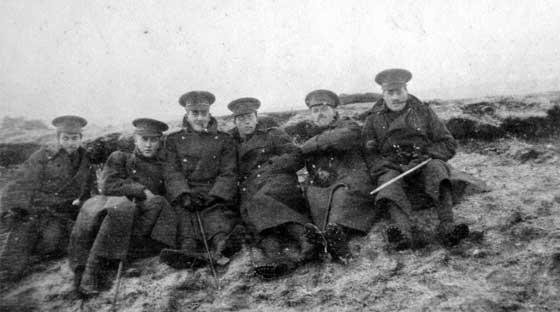
Thomas Nigel Baines, Miles Howell, Jack Manlove, ?Walmer, Donald
Morrison, Lionel Arthur Henry Dickinson
Accession Number: KO2928/05-033
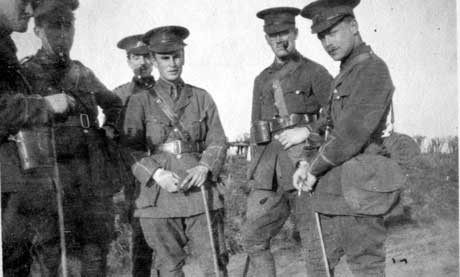
Thomas Nigel Baines, Sydney George Jurgens, ?, Miles Howell, Fisher
Arthur Haslett Freke-Evans and Roy Marsden.
Accession Number: KO2928/05-034
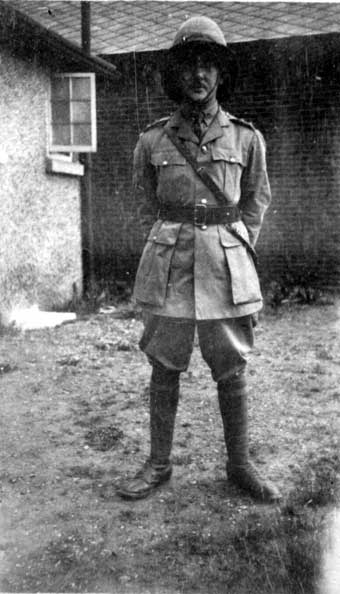
Jack Manlove
Accession Number: KO2928/05-035
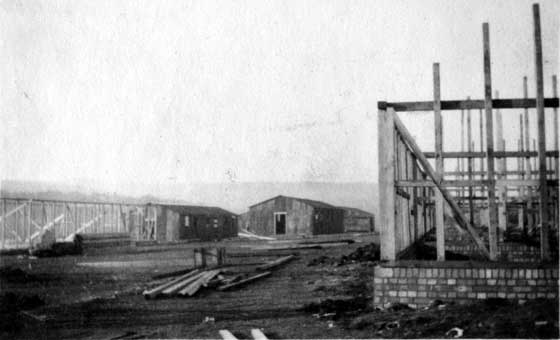
New billets and camp under construction at Ludgershall Camp, Salisbury
Plain.
Accession Number: KO2928/05-036
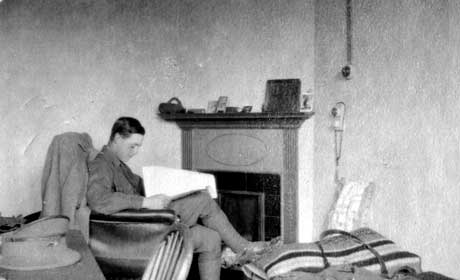
Edward Melville Forbes Taylor in room.
Accession Number: KO2928/05-037

Colin Leigh Mere
Accession Number: KO2928/05-038

Jack Manlove and Dicky (assume Lionel Arthur Henry Dickinson) in room.
Accession Number: KO2928/05-039
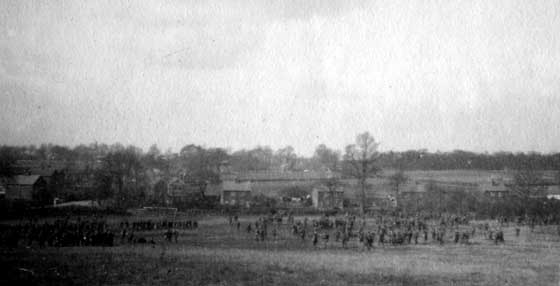
The 6th Battalion, King’s Own Royal Lancaster Regiment at Windlesham,
Surrey.
Accession Number: KO2928/05-040
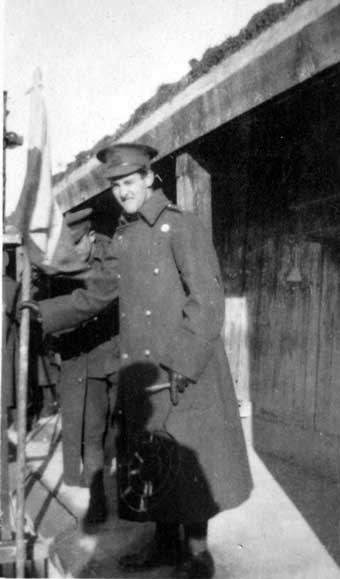
Thomas Nigel Baines, in the butts at Pirbright.
Accession Number: KO2928/05-041
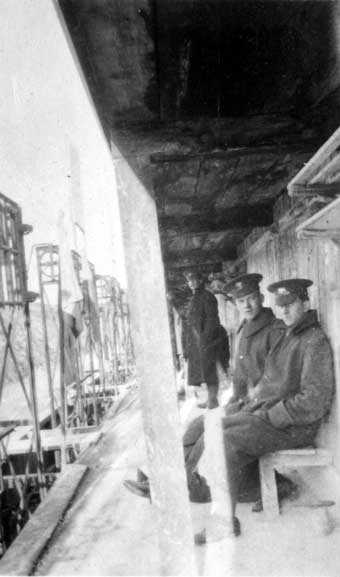
Pirbright Range.
Accession Number: KO2928/05-042
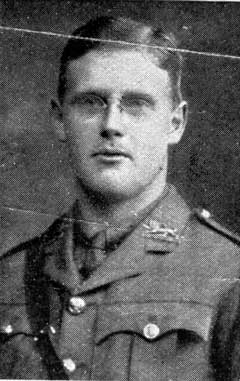
Captain Fisher Arthur Haslett Freke-Evans, 6th Battalion, King’s Own
Royal Lancaster Regiment.
Accession Number: KO2928/05-043
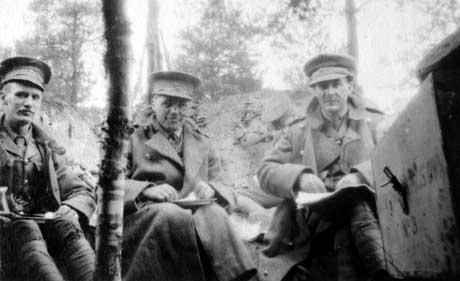
After a night in the trenches at Blackdown. Francis Danns Buckle, Donald
Morrison and Major Richard Lloyd Carnegy.
Accession Number: KO2928/05-044
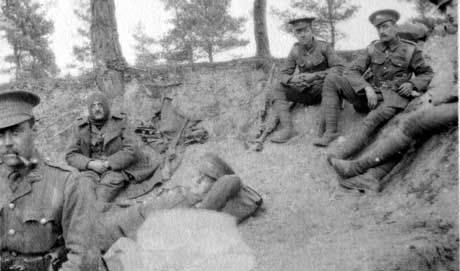
Frith Hill Trenches. Hugh Dudle Murrane and Dicky (assume Lionel Arthur
Henry Dickinson.
Accession Number: KO2928/05-045
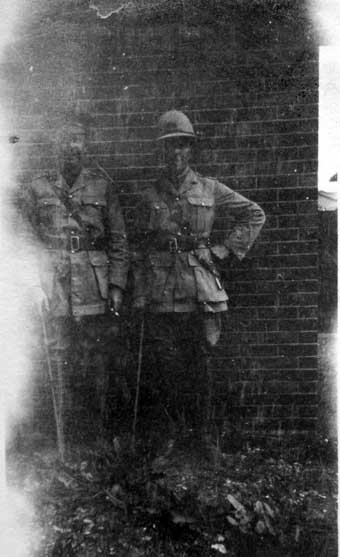
Melville O Ashworth and Sydney George Jurgens.
Accession Number: KO2928/05-046
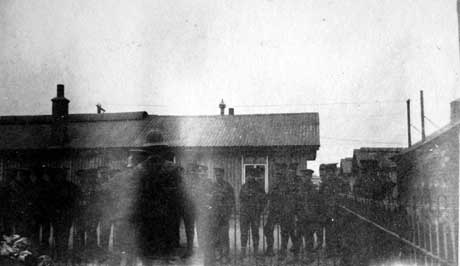
Fitting pith helmets, Jun 1915, Blackdown. 6th Battalion, King’s Own
Royal Lancaster Regiment.
Accession Number: KO2928/05-047
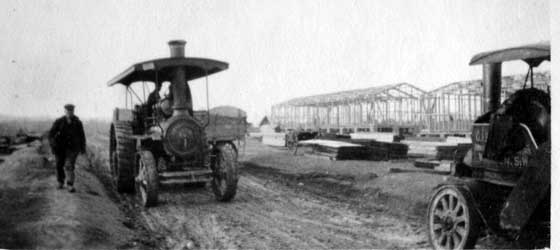
Construction work underway at Ludgershall Camp, Salisbury Plain. Two
traction engines in view with huts under construction to the rear.
Accession Number: KO2928/05-048

Miles Howell and Harry Rowland Walker.
Accession Number: KO2928/05-049
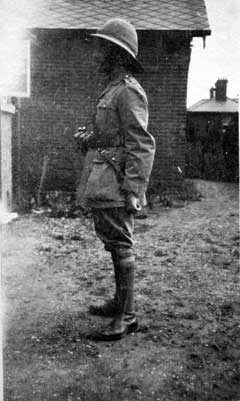
Jack Manlove
Accession Number: KO2928/05-050
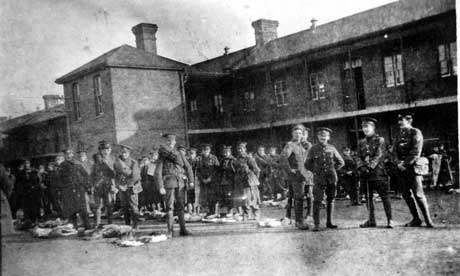
Number 1 Company, 6th Battalion, King’s Own Royal Lancaster Regiment.
Kit inspection.
Accession Number: KO2928/05-051
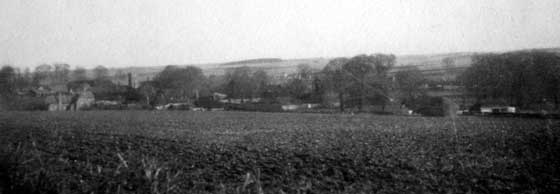
Collingbourne Ducis, Salisbury Plain, Wiltshire.
Accession Number: KO2928/05-052
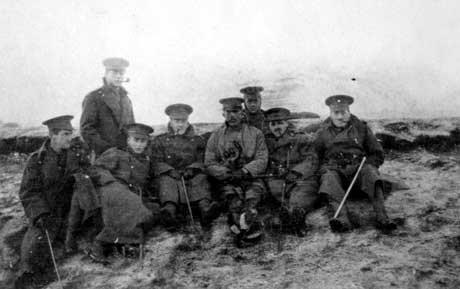
Perham Downs, 1914.
Accession Number: KO2928/05-053
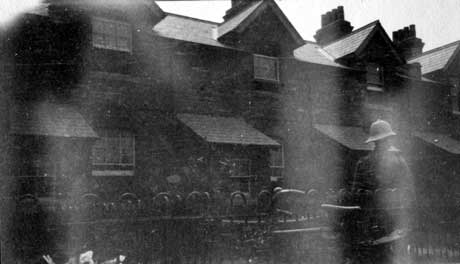
Blackdown Camp.
Accession Number: KO2928/05-054
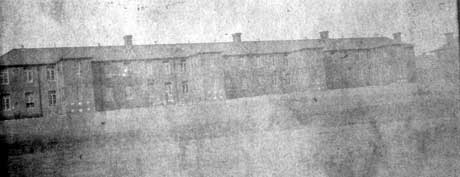
Lucknow Barracks, Tidworth.
Accession Number: KO2928/05-055
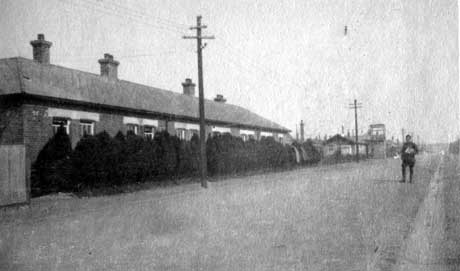
Officers Mess, Alma Barracks, Blackdown. With Jack Manlove.
Accession Number: KO2928/05-056
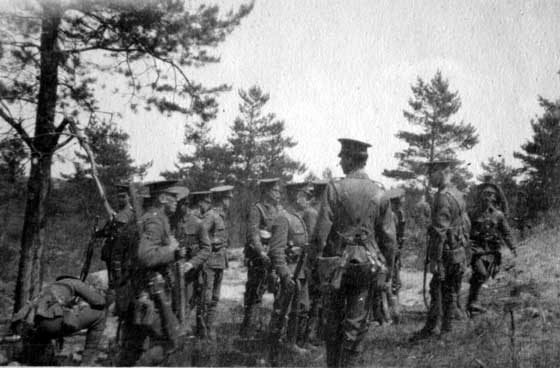
Number 4 Platoon, 6th Battalion, King’s Own Royal Lancaster Regiment,
Frith Hill.
Accession Number: KO2928/05-057
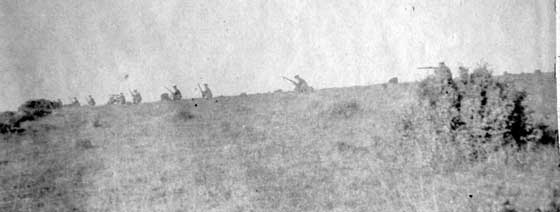
Salisbury Plain.
Accession Number: KO2928/05-058
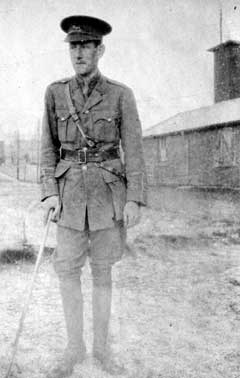
Percy Clegg
Accession Number: KO2928/05-059
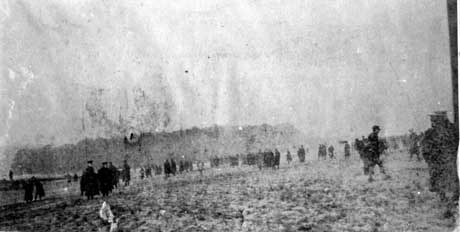
Perham Down Range
Accession Number: KO2928/05-060

Parade Ground, Alma Barracks, Blackdown.
Accession Number: KO2928/05-061
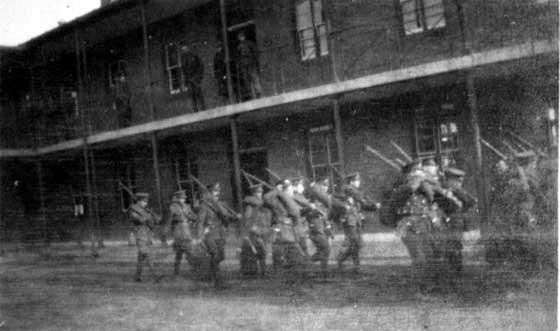
Number 1 Company, Tidworth, 6th Battalion, King’s Own Royal Lancaster
Regiment.
Accession Number: KO2928/05-062
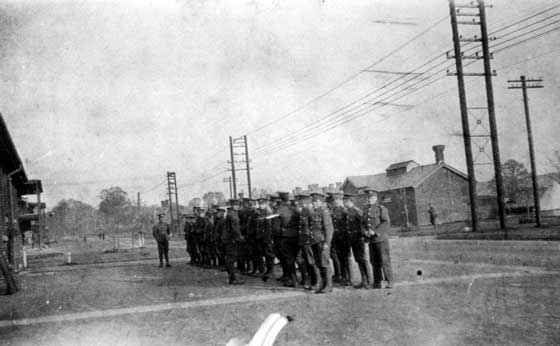
Rations.
Accession Number: KO2928/05-063
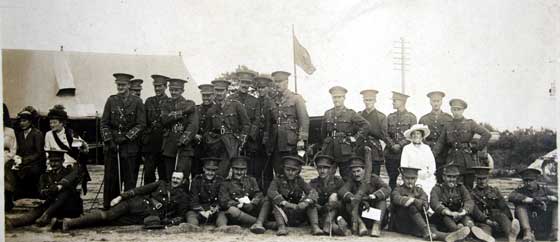
Group of officers and some ladies at event in Barracks.
Photograph by Criterion Photo Co. North Street, Wareham.
Accession Number: KO2928/05-064
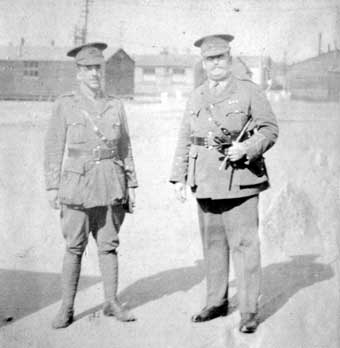
Two unidentified officers of the King’s Own Royal Lancaster Regiment.
Accession Number: KO2928/05-065
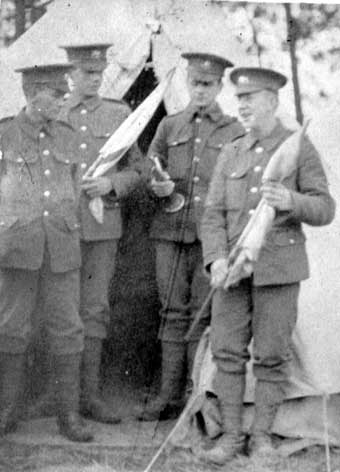
Four unidentified soldiers of the 6th Battalion, King’s Own Royal
Lancaster Regiment, one with bugle and two with signalling flags.
Accession Number: KO2928/05-066
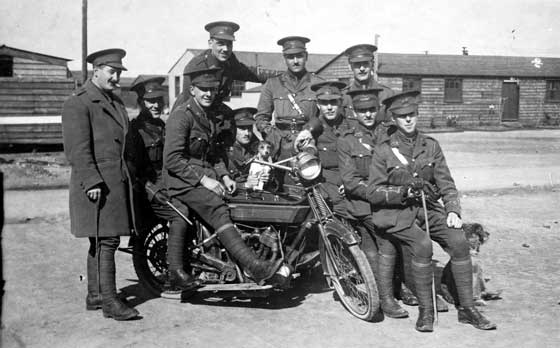
Group of ten officers and two dogs on motorcycle, with wooden huts to
rear.
Photograph by Criterion Photo Co. North Street, Wareham.
Accession Number: KO2928/05-067
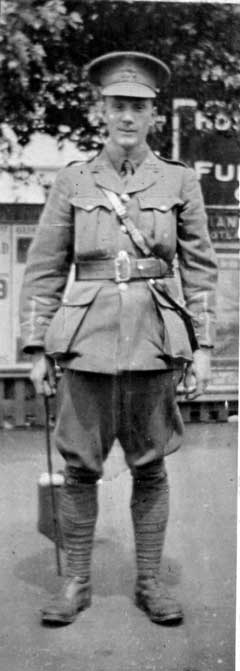
Unidentified officer of the King’s Own Royal Lancaster Regiment.
Accession Number: KO2928/05-068
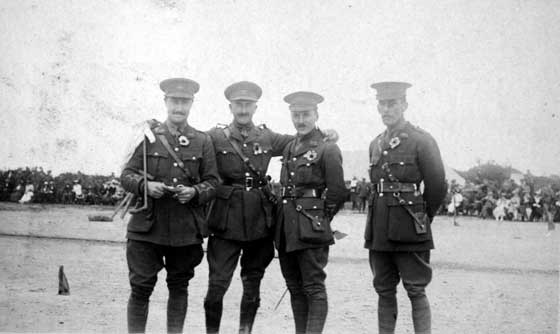
Four officers of the King’s Own Royal Lancaster Regiment each wearing a
large flower, photographed at some event in barracks as spectators can
be seen to the rear.
Photograph by Criterion Photo Co. North Street, Wareham.
Accession Number: KO2928/05-069

Unidentified officer of the King’s Own Royal Lancaster Regiment.
Accession Number: KO2928/05-070
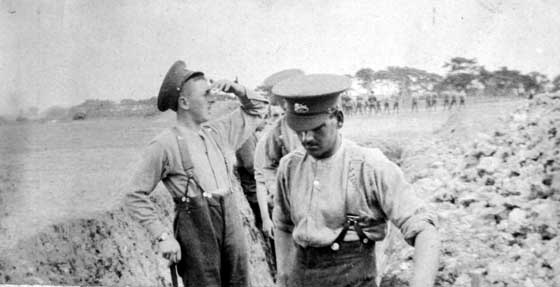
Soldiers of the King’s Own Royal Lancaster Regiment digging trenches.
Accession Number: KO2928/05-071
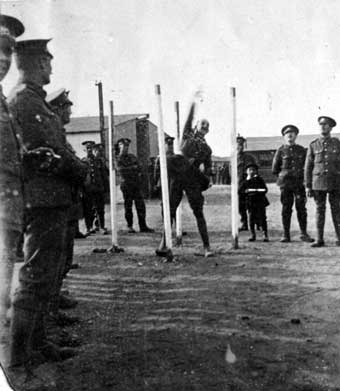
Soldiers, throwing competition?
Accession Number: KO2928/05-072

Soldiers, throwing competition?
Accession Number: KO2928/05-073
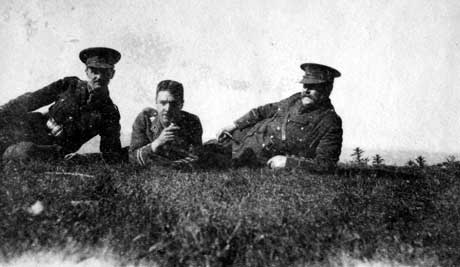
Three officers of the King’s Own Royal Lancaster Regiment, resting.
Accession Number: KO2928/05-074
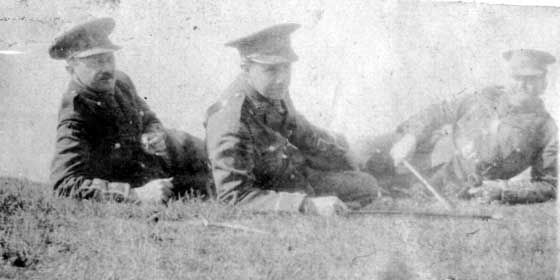
Three officers of the King’s Own Royal Lancaster Regiment, resting.
Accession Number: KO2928/05-075
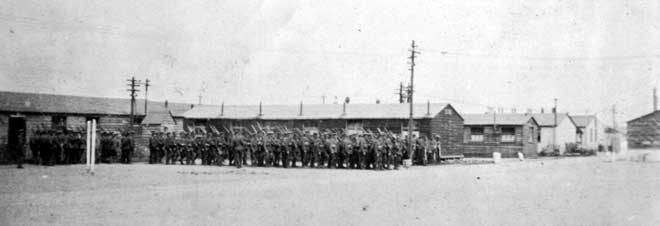
Company of the 6th Battalion, King’s Own Royal Lancaster Regiment formed
up in camp.
Accession Number: KO2928/05-076

Unidentified man with bowl and spoon.
Accession Number: KO2928/05-077
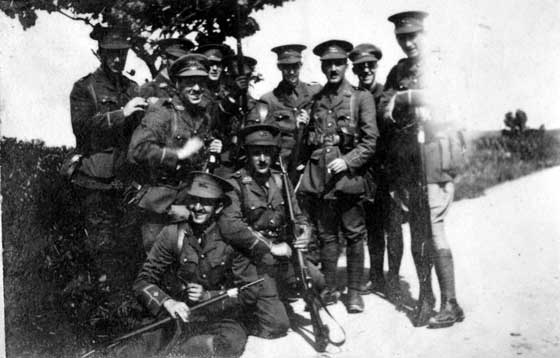
Group of officers of the 6th Battalion, King’s Own Royal Lancaster
Regiment on roadside.
Accession Number: KO2928/05-078
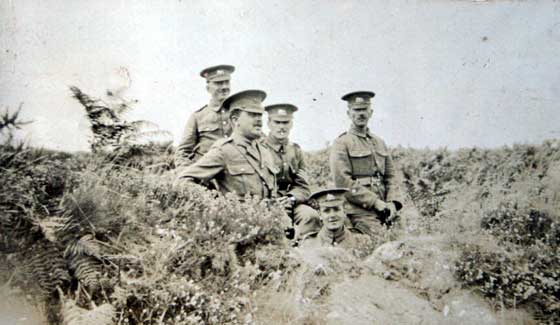
Officers and soldiers of the 6th Battalion, King’s Own Royal Lancaster
Regiment on the ranges.
Accession Number: KO2928/05-079
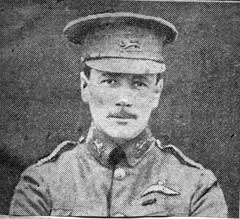
Major General J M Salmond, who has been appointed Director General of
Military Aeronautics, with a seat on the Army Council.
Accession Number: KO2928/05-080
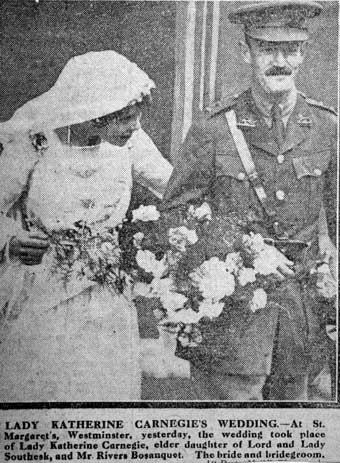
Lady Katherine Carnegie’s wedding, at St. Margaret’s, Westminster, to Mr
Arthur Revers Bosanquet, of the King’s Own Royal Lancaster Regiment.
Lady Katherine Carnegie, elder daughter of Lord and Lady Southesk
Accession Number: KO2928/05-081
The First Seven Divisions, Vivid Commemoration. Vallant Memories.
Accession Number: KO2928/05-082
Memo from Adjutant 6th Battalion, King’s Own Royal Lancaster Regiment,
to Officer Commanding Number 3 Company, 6th Battalion, Romsey, 12 Feb
1915 regarding funeral of Stoker Lear, HMS Collingwood.
Accession Number: KO2928/05-083
Letter from Superintendent Watts, Hampshire Constabulary, Romsey
Division, dated 12 Feb 1915, to the Officer Commanding, 6th Battalion,
King’s Own Royal Lancaster Regiment about the funeral for Stoker Lear,
HMS Collingwood.
Accession Number: KO2928/05-084
Letter from Superintendent Watts, Hampshire Constabulary, Romsey
Division, dated 12 Feb 1915, to the Officer Commanding 6th Battalion,
King’s Own Royal Lancaster Regiment about the funeral for Stoker Lear,
HMS Collingwood.
“Sir,
I regret to inform you that Stoker Sidney Victor Lear, of HMS
Collingwood, died in the Nursing Home on the 10th instant from injuries
received through falling from a train between Salisbury and Romsey on
the 9th instant, an inquest was held today, a verdict of accidental
death was returned. The ship leaves on Saturday, consequently a burial
party cannot be sent, deceased friends cannot attend funeral either as
they live so far away. Under the circumstances I shall be glad if you
will kindly furnish a burial party to include four bearers, to be a
Romsey Nursing Home at 2 pm on Saturday the 13th instant to escort the
body which will be conveyed in a hearse to Romsey Cemetery on the Botley
Road, to arrive there at 2.30 p.m. Mr Goulding, Undertaker, The Hundred,
Romsey, has the arrangements in hand, deceased’s religion is Church of
England.
Your kind assistance will be greatly appreciated as otherwise the
unfortunate man would have no one to attend his funeral.
I am, sir,
Your obedient Servant
Superintendent Watts.”
Accession Number: KO2928/05-085
The Romsey Advertiser, mention of fatal accident to Stoker Lear of HMS
Collingwood, Church Parade of the 6th Service Battalion, King’s Own
Royal Lancaster Regiment, and Soldiers Concert.
Accession Number: KO2928/05-086
Receipt to Lieutenant Taylor for £7 for board, 2 Mar 1915.
Accession Number: KO2928/05-087
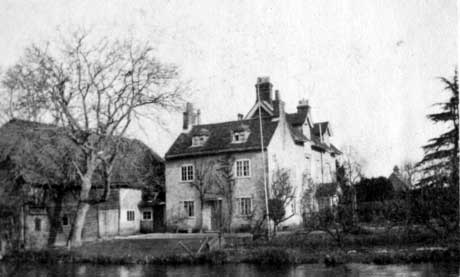
Building at Romsey, Jan-Feb 1915
Accession Number: KO2928/05-088
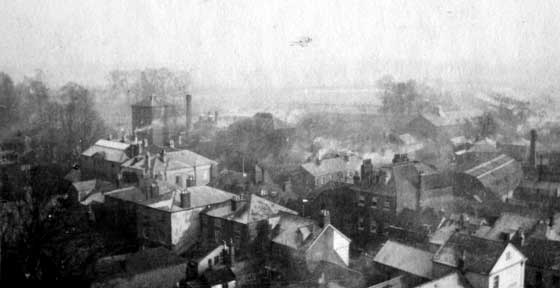
Romsey from the Abbey Tower, Jan-Feb 1915.
Accession Number: KO2928/05-089

The Abbey at Romsey, Jan-Feb 1915
Accession Number: KO2928/05-090
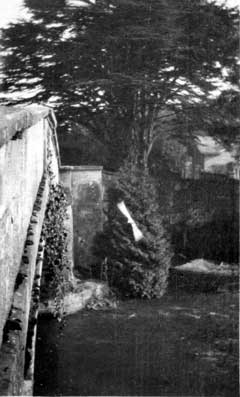
Bridge at Romsey, Jan-Feb 1915
Accession Number: KO2928/05-091
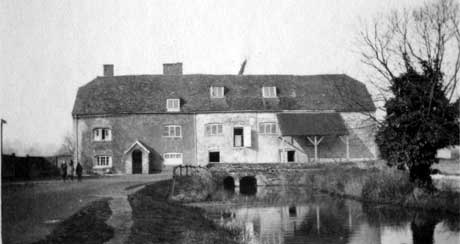
The Old Mill, Romsey, Jan-Feb 1915
Accession Number: KO2928/05-092
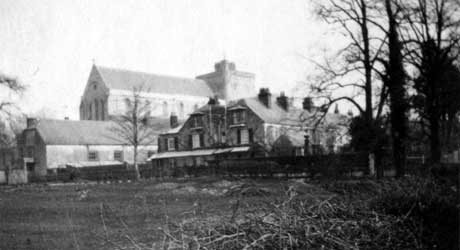
The Abbey at Romsey, Jan-Feb 1915
Accession Number: KO2928/05-093
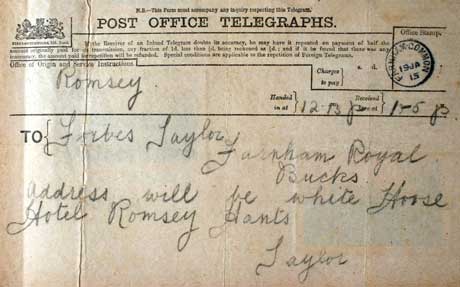
Telegram dated 19 Jan 1915 re address: White Horse Hotel, Romsey,
Hampshire.
Accession Number: KO2928/05-094
Newspaper report on the Church Parade of the 6th Battalion, King’s Own
Royal Lancaster Regiment.
Church Parade – The 6th Service Battalion King’s Own
Lancasters paraded for church on Sunday morning, the main body attending
the Abbey Church. A ten day’s mission was in progress, and the Missioner
preached from Matthew xi 29: “Take my yoke upon you and learn of Me.”
When soldiers were present, said the preacher, it was no good preaching
to civilians. They felt that men who were making the noblest sacrifice
for their country that men could make were present, and no civilian
could think of himself before them. Yoke meant discipline in a sense
which civilians could scarcely understand. The man who knew discipline
would understand Jesus Christ, the great and victorious leader of men.
Napoleon, who was one of the most amazing leaders of men that the world
ever saw, said of Jesus Christ: “Other men have made great empires –
Charlemagne, Alexander and myself. They have made their empires with the
sword, they have established kingdoms over the hearts of men by might,
they have kindled other men. But to do it they must appear in person…
Jesus Christ has made an empire greater than that; an empire resting,
not upon the sword, but upon love, and millions that have never seen Him
would die for Him to-day.” That was what Napoleon thought of Jesus
Christ. Christ said “If you will fight in My battles, if you will follow
Me with the devotion that men are always ready to give when they have
seen a true leader of men face to face, then submit to My discipline.”
The first thing to took to make a soldier was spirit; but spirit was not
all that was wanted. When Lord Kitchener asked for a new army he had not
to wait long before he got it. From every part of the Empire there came
the response from men of spirit. If spirit was all that was required
these men could have been sent right away to save Belgium. But they had
to wait till discipline was got into them, and when they got that they
were soldiers. The same process had to be undergone by the Christian.
Accession Number: KO2928/05-095
Newspaper report on 6th Battalion, King’s Own, being in Romsey.
The Sixth Service Battalion King’s Own Lancasters (Kitchener’s Army),
six days later, on Tuesday 19 Jan 1915 were billeted on Romsey. They
came from Tidworth where they had been undergoing training, and bore all
the appearance of having had a rather rough time. But the excellent
arrangements made for them in Romsey soon put them on a more comfortable
footing. After a months stay they left yesterday (Thursday) afternoon
for Aldershot, having made many friends. The lads from Lancashire were
rather strange at first, but in a very short space of time the
peculiarities of north and south seemed to blend delightfully, and they
felt quite at home.
Accession Number: KO2928/05-096
Newspaper report on the departure of the 6th Battalion, King’s Own.
Departure of the King’s Own – Yesterday (Thursday) afternoon
the 6th (Service) Battalion King’s Own Lancasters left Romsey, where
they have stayed for just over four weeks, their destination being
Bordon Camp. Before leaving they were the recipients of a very
interesting present from Mr T A Flooks, manager of the Wilts and Dorset
Bank, the Hundred, who gave them a pure-bred Irish terrier dog as
mascot. The dog had round its neck a collar with the following
inscription engraved by Mr Kersey, jeweller, 3, The Hundred: “Chum. 6th
Batt. King’s Own” Part of the battalion had to parade in the wet before
marching to the railway station, and they had not left before a
battalion of the Highland Light Infantry, under Colonel Begbie, arrived
from Bordon and marched into the town with bagpipes playing and drums
beating. A number of Scotch Canadians accompanied them, and were also
billeted in the town. The behaviour of the King’s Own, as a whole,
whilst in the town was excellent the borough police having very little
trouble with them.
Accession Number: KO2928/05-097
Newspaper report:
Fatal Railway Accident Near Romsey
The working of Brakes.
Mr P B Ingoldby, of Southampton, held an inquest in the Council Chamber,
Romsey, on Friday afternoon touching the death of Victor Sidney Lear,
first class stoker on HMS Collingwood, which was noticed in our issue
last week. Mr J M C Dyke, from Mr George Hall King, Admiralty Law Agent,
appeared for the Admiralty; Mr A H Emanuel watched the case on behalf of
the London and South Western Railway Company; and there were also
present Inspector Swayne, of the L & SW police, Inspector Goodyear, of
the Permanent Way Department, Salisbury; Mr F J West, stationmaster at
Romsey. Mr R A Stiles was chosen foreman of the jury.
Sidney Lear, of 9 Redfield Hill, Oldland Common, near Bristol, bootmaker,
father of the deceased identified the body as that of his own son, who
was 25 years of age last May, and was first class stoker on HMS
Collingwood, now lying at Portsmouth. He last saw his son alive on
Tuesday 9th inst., when he left work at Oldland Common. His son lived
with him as a rule.
Charles Norman, 17, of Old Charlotte Street, Bristol, leading stoker of
HMS Collingwood, stated that he travelled from Bristol to Salisbury by
the 5.30 pm train on Tuesday, 9th, inst. Deceased was in the next
compartment of the carriage. All got out at Salisbury station about 8.30
pm, where they had to change When the Portsmouth train came in about
8.50 pm they rushed from the refreshment bar to get into the train. He
last saw deceased in the refreshment bar at Salisbury. Deceased had one
or two drinks, but was not intoxicated. He did not seem affected by
drink. There were several shipmates in the same carriage.
Mr Emanuel: Do you know whether the deceased had lost his ticket?
Witness: No, sir.
Mr Emanuel: Was the 8.50 pm train from Salisbury the proper train to
catch?
Witness: Yes, sir.
Mr Emanuel: Was that the appointed train?
Witness: Yes.
The Foreman: Was he in the next compartment alone, or with any mates?
The Coroner: That will be shown by the next witness. The present witness
did not see deceased after leaving Salisbury.
The Coroner said he had a statement made by first class stoker Albert
Taylor, who was with last witness. Taylor said that at Salisbury he saw
deceased in the refreshment bar, but did not see him in the Portsmouth
train after it had left Salisbury. Although deceased had some drink he
was not intoxicated.
Edwin Sidney Frank Birch, an ordinary signalman of the Royal Naval
Barracks, Portsmouth, was told by the Coroner that he was not obliged to
say anything that would incriminate himself. Asked if he was willing to
be sworn, witness replied in the affirmative, and stated that on Tuesday
9th inst., he was a passenger from Salisbury to Portsmouth by the 9.22
pm train. He got into a third class compartment towards the rear of the
train, in which was a seaman with a ribbon on his cap marked “HMS
Collingwood.” The sailor was seated with his back to the engine on the
platform side of the compartment, and was very slightly under the
influence of drink, being very drowsy. Witness asked him where he was
going, and the seaman said “I have to get back to Portsmouth by 10
tonight. I have lost my bundle and liberty ticket on the platform at
Salisbury. I come from just outside Bristol.” The seaman was very quiet,
and went to sleep soon after the train started. Witness began to dose.
He saw the seaman suddenly get off his seat, go to the offside door of
the compartment, and pull back the catch inside the door. (A model of
the door of the compartment was produced in court). The door suddenly
flew open, and witness rushed to get hold of the seaman, but only
managed to seize the tail of his coat. The weight of the seaman, pulled
the coat out of witness’ hand, and nearly dragged witness out of the
compartment. The seaman appeared to fall right out of the train without
catching hold of anything, and witness had some difficulty in saving
himself from being pulled out. Witness pulled the communication chain
four times, and then tried to shut the door, but could not do so until
the train slackened speed because of the pressure of the wind against
the door. The train did not stop till it reached Dean.
The Coroner: Do you know whereabouts it was that the accident occurred?
Witness: About a mile on the Salisbury side of Dean station.
The Coroner: When you pulled the chain you know you were getting near
Dean.
Witness: Yes, I knew we were getting near Dean. I got out at Dean and
told the guard what had happened.
The Coroner: When deceased got off the seat did he appear to be asleep?
Witness: Yes, he did, sir.
The Coroner: Although you were dozing you are sure he was asleep before
he rose from his seat?
Witness: Yes, sir.
The Coroner: When he got up did you think he was going to pull the blind
down?
Witness: Yes, sir, I did.
The Coroner: It ought to have been down; I suppose it was up as a matter
of fact?
Witness: Yes, sir.
The Coroner: Was the window shut?
Witness: Yes, the window was shut.
The Coroner: When he touched the catch of the door you realised he was
going to open it?
Witness: Yes, sir.
The Coroner: Then you tried to catch hold of him?
Witness: Yes.
The Coroner: Have you ever seen him before?
Witness: No, sir, never before.
The Coroner: Was there anybody else in the compartment with you?
Witness: No, sir.
The Coroner: Was he seated opposite you?
Witness: Yes.
The Foreman: Did he make any remark to you when or after he rose from
his seat?
Witness: No, sir.
The Foreman: Why did you pull the cord four times?
Witness: To make certain.
Mr Emanuel here explained that there were four chains, one at each side
of both windows.
The Foreman: Did you make any remark to deceased.
Witness: No, no remark at all.
Several of the jurymen also asked questions.
The Coroner: After you left Salisbury platform, did you have any
conversation with deceased?
Witness: No.
William Arthur Collins, motor engineer, of 34 Chipper Lane, Salisbury,
stated that he was at the London and South Western Railway station about
8.50 p.m. on Tuesday and saw deceased in the refreshment room. Deceased
said he had lost his connection and also his ticket, and would have to
go by the next train, which was the 9.22 pm. He would get a note from
someone saying that he had lost his ticket, and then get another one,
but he should lose his boat, as he had to be in by 10 o’clock. Witness
said he should like to know how he got on, and deceased replied that he
would write and let him know. Witness gave him his address. He saw him
get into the train. He thought he was capable of taking care of himself.
Witness walked the platform with him, knew he had a drink because he was
quite jolly, but was self-controlled. Whilst witness was talking to
deceased the last witness got into the compartment.
Charles Leonard Candy, of 147, Southampton Road, Eastleigh, said he was
a travelling staff man employed by the London and South Western Railway
Company, and on the 9th inst was guard on the 9.22 pm train from
Salisbury to Eastleigh. When approaching Dean down stop signal he
noticed that the vacuum brake was applied. On reaching Dean station
platform a sailor ran up and said “My mate has fallen from the train.”
Witness went with the sailor to a third class compartment of the
carriage next the engine, and found the offside door on the catch.
The Coroner: Just show us what you mean on that door (pointing to the
door in the court).
Witness did as requested, and said that he examined the lock and found
it in good working order. The communication chain was also in good
order.
The Coroner: How was it the train did not stop before it reached Dean
Station?
Witness: Of course you cannot pull up the train all at once. There is a
certain danger. It does not do to put the brake on all at once or the
people would be falling into each other. You have to do it gradually.
The Coroner: Would the train stop at Dean in the ordinary way?
Witness: Yes, sir; it is booked to stop there.
The Coroner: Did you leave from No. 1 Platform, Salisbury?
Witness: Yes, sir.
The Coroner: Was that one the left hand side of the train running from
Salisbury to Eastleigh?
Witness: Yes, sir.
The Coroner: On the opposite side to where the deceased fell out?
Witness: Yes, sir.
A juryman asked whether it would have been dangerous to stop the train
before it came to Dean station?
Witness said the brake worked automatically. As a rule the brake was put
on before reaching the station, then taken off and put on again to stop
the train.
The Coroner: How far were you from Dean station when you noticed the
vacuum brake on?
Witness: About 100 yards from Dean Station.
Mr Miles: (a juryman): With whom does the communications cord connect,
with driver or the guard?
Witness: With the brake itself.
Mr Miles: Can it stop the train?
Witness: Oh, yes, and a child could pull it.
In this case the driver might have been applying the brake. The brake
would be applied before entering Dean station, according to the speed
the train was going at. In this case perhaps about 200 or 300 yards
before it reached the station. The communication cord would act on the
same brake as that used by the driver.
Horace Wiltshire, of Railway Cottages, Dean, stated that he was a
foreman platelayer in the employ of the London and South Western Railway
Company. On receiving information that a man had fallen from the train
from Salisbury, he proceeded along the line, and about 1 ½ mile on the
Salisbury side of the Dean station he found deceased lying on his face
in the 6 foot way between the up and down lines. He turned him over and
found he was alive but unconscious. He remained with him until the
arrival of the cattle train from Salisbury, which was stopped and the
man put into it and taken to Dean. Here the man was transferred into the
guard’s van of the 10.40 train from Salisbury, and taken to Romsey,
where he was seen and attended to by Dr R C Bartlett, and taken to the
Romsey Nursing Home on a stretcher by the police.
Dr Ralph Clarke Bartlett, honorary surgeon to the Romsey Nursing Home
and Cottage Hospital, stated that in response to a message received
after 11 o’clock on Tuesday night, 9th inst. he went to Romsey railway
station and awaited the arrival of the Salisbury train, which came in
about 11.45 pm. On the floor of the guard’s van he saw the deceased
lying unconscious, breathing heavily under deep coma, and suffering from
compression of the brain. The face and head were covered with blood.
There were two scalp wounds, but other parts of the body were apparently
uninjured. There was no disarrangement of the clothing. The deceased was
carried by the police, who were waiting with a stretcher, to the Romsey
Cottage Hospital, where on arrival witness made a further examination –
the first alone and ten with his (witness’) brother. He found that in
the large scalp wound, which was on the right side of the fore part of
the crown of the head, there was a depressed fracture of the skull, a
long narrow portion of the bone having been driven on to the membranes
of the brain. The only chance of saving the man’s life appeared to be by
raising the broken portion of the skull. He was trephined, and the
depressed portion removed. There was no subsequent improvement in his
condition. He remained unconscious till he died on Wednesday afternoon.
The Coroner: Was the deceased unconscious when he was taken into the
Home?
Witness: He was so deeply unconscious that nothing would bring him
round. There is reason from the symptoms to suspect that the base of
skull was fractured in a part inaccessible to operation.
The Coroner: What is your opinion as to the cause of death?
Witness: Compression of the brain from haemorrhage, resulting from
fracture of the skull, such as would be likely to be caused by a fall
from a train in motion.
The Coroner: I do not think we need trouble the matron of the home to
give evidence; we have had a very full statement from the doctor. Still,
I will call her if you wish.
The jury expressed their satisfaction with the evidence already given.
The Coroner said they had had a most exhaustive inquiry into the
accident, and the evidence of the guard showed that the door was found
open on the offside, which confirmed the evidence given by the man who
was in the compartment with the deceased. It was quite evident that the
deceased had fallen out of the compartment, but it was not quite certain
what his condition was, although he appeared to be in a state more or
less muddled. He was not drunk, but had been sleep before he went to the
door. They would be right to bring a verdict of compression of the brain
from haemorrhage from a fracture of the skull caused by falling from a
train in motion. There did not appear to be any reason to find any fault
with the arrangements of the railway company either in their doorwork,
communication chains or automatic brakework.
The Foreman said the jury were unanimous in their verdict of “Accidental
death” by falling from a train, and should like to express sympathy with
the relatives of the deceased.
The Coroner read a letter from Engineer Lieutenant Commander T H Warde,
of HMS Collingwood, dated 11th inst. as follows:-
“I have the honour to report that Stoker First Class Victor Sidney Lear
has served with us nearly two years in this ship, and I have always
found him very steady, reliable, temperate and a superior stoker, and of
a quiet by cheerful disposition. I have never noticed him in any way
depressed or worried.”
The Coroner joined with the jury in sympathy with the relatives.
Supt. Waters thanked Mr Swayne and others on the railway for their
assistance in getting the evidence together.
Mr Manuel suitably replied.
The jury gave their fees to the father of deceased.
Military Funeral
On Saturday the mortal remains of deceased were interred in Romsey
cemetery with military honours. A detachment of No. 3 Company, 6th
Service Battalion King’s Own Lancasters, under Second Lieutenant Taylor,
marched to the Cottage Hospital, Cherville Street, and lined up in front
of the institution. Bearers in khaki transferred the coffin, which was
covered with two Union Jack , from the hospital to the hearse, and then
a firing party, under Sergeant Matthews, headed the procession with arms
reversed. Next came the drum and fife band, under Sergeant McMutrie,
with drums draped in black. The hearse was preceded by the undertakers,
and, following the hearse, were two long files of soldiers. In this
order the funeral cortage proceeded about 2 pm, through the Market
Place, along the Hundred, Winchester Street, and up Botley Road, to the
cemetery. Here the vicar (Rev H Martin St. C Tapper) conducted a service
in the church, and afterwards said the committal at the graveside. The
firing party discharged three volleys over the grave, the buglers
sounded “The Last Post” the firing party fixed bayonets and marched off
the ground.
Whilst the service was in progress a severe storm of wind and rain came
on, and continued during the afternoon. It had been arranged that the
band should play on the return march, but the inclemency of the weather
rendered the fulfilment (to say the least) inadvisable. Messrs. Goulding
and Son, Romsey, carried out the funeral arrangements satisfactorily.
Newspaper report on Fatal Railway Accident near Romsey.
Accession Number: KO2928/05-098
Princess Mary card, 1915.
Accession Number: KO2928/05-099
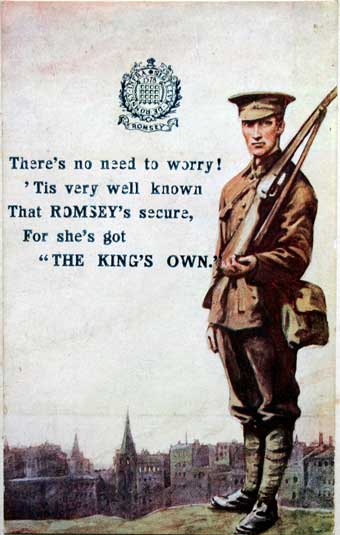
Postcard, “Romsey” “There’s no need to worry! ‘Tis very well known that
Romsey’ secure For she’s got ‘The King’s Own’.
Accession Number: KO2928/05-100
© Images are copyright, Trustees of the King's Own Royal Regiment Museum.
You must seek permission prior to
publication of any of our images.
Only a proportion of our collections
are on display at anyone time. Certain items are on loan for display
in other institutions. An appointment is required to consult any of
our collections which are held in store.





























































































